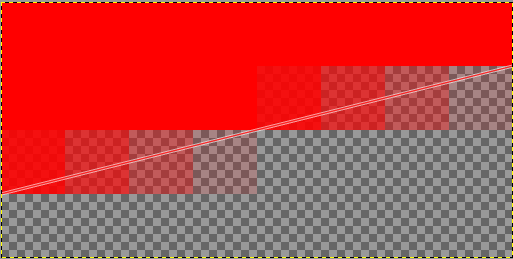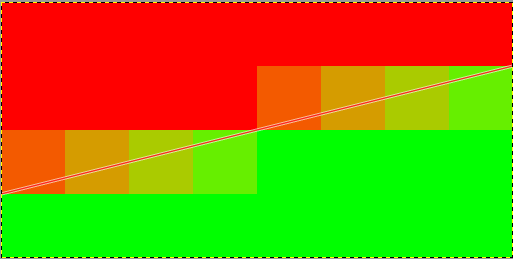But that's exactly the point!!!
Imagine you have a border between a red and a blue area. The pixels on the border have mix of the red and the blue, depending on the subpixel are that would be of each color:

When you do the Color Erase with blue, the purple pixels become pure red, but semi transparent:

If you then paint over with green in Behind mode, the transparency in the semi transparent pixels red pixels is replaced by green,, so you red/blue pixels are replaced by red/green pixels where the green exactly replaces the blue: you get the smooth edge back, but between different colors.

Imagine you have a border between a red and a blue area. The pixels on the border have mix of the red and the blue, depending on the subpixel are that would be of each color:
When you do the Color Erase with blue, the purple pixels become pure red, but semi transparent:
If you then paint over with green in Behind mode, the transparency in the semi transparent pixels red pixels is replaced by green,, so you red/blue pixels are replaced by red/green pixels where the green exactly replaces the blue: you get the smooth edge back, but between different colors.
Also, the mentioned tutorial shows how to obtain a selection that protects most of your object so that the Color Erase only happens on the edges and leaves most of the object untouched.



